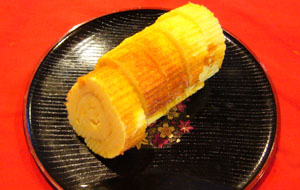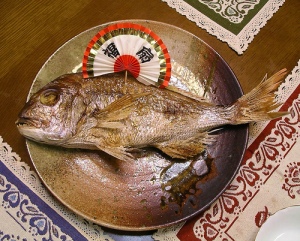So it’s holiday season in Japan. Christmas and New Years are both coming up, and it’s the time for gift giving, partying, being with family right? Yes, but not like the typical American would expect. Christmas is actually party time in Japan, where companies and friends hold get together’s. Maybe for a small few presents are given (namely Christians in Japan), but the majority of presents given on Christmas are more of a potluck style. New Years, however, is a time for serious family get together and celebration.
Celebrating New Years is a three day event in Japan. The first day, Jan. 1st, comprises eating special food called “osechi ryori”: http://hillslearning.com/2009/12/22/osechi-new-years-food-in-japan/ When you wake up on January 1st you’re supposed to eat crab, shrimp, specially prepared roots, potatoes, etc. Each combination of food will bring you a different kind of luck in the new year. These baskets of specially prepared food can be bought at your local department store, and generally run about 100 dollars or so.
After eating, Jan 1st through 3rd are the most important 3 days of the year for a Japanese shrine. Families get together, dress up in formal wear such as a kimono, and visit their local shrines (and larger famous ones, depending on your preference) to bring in the New Year. While at a shrine on New Years everyone buys an arrow, a symbol of good luck for the coming year. As a foreigner myself, I always forgot to do the second part of the ceremony, and that was bring your old arrow in from last year and burn it in a communal fire. After receiving the arrow, every visitor needs to line up and pray for the coming year, and ring the bell of the shrine for good luck.
Culturally celebrating New Years in Japan is a unique experience, but of course any article about celebrating New Years wouldn’t be complete without teaching how to say “Happy New Year.” In Japanese, it’s three words: akemashite omedeito gozaimasu.
1 – A KE MA SHI TE (A as in HA sound, KE as in OKAY, MA as in WOMAN, SHI sounds like SHE, TE as in LATTE)
akemashite represents the coming of the new year, literally “opening”
2 – O ME DEI TO (O as in hoe, ME as in MAY, DEI as in DAY, TO as in TOTAL)
omedeito means congratulations
3 – GO ZAI MA SU (GO as in go, ZAI as in Zaion, MA as in WOMAN, SU sounds like SUE)
gozaimasu is a word that adds formality to the expression
So the expression literally means “I formally congratulate you on the opening of a new year”
I hope you enjoyed learning about how to celebrate new years in Japan. Next time you have the opportunity to ask a Japanese person about celebrating the new year in Japan, please say “akemeashite omedeito gozimasu” and ask about their experiences with osechi ryori and shrine visits. Culturally and linguistically it should be an interesting conversation!
 own observations.
own observations. spring seems to have sprung, as I have gotten reports of the sakura beginning to bloom around the Imperial Palace. I also just received an email from my former co-worker at the Kumamoto International Center who was kind enough to send pictures of the sakura down south (you can see Kumamoto Castle in the background). Enjoy and happy spring!
spring seems to have sprung, as I have gotten reports of the sakura beginning to bloom around the Imperial Palace. I also just received an email from my former co-worker at the Kumamoto International Center who was kind enough to send pictures of the sakura down south (you can see Kumamoto Castle in the background). Enjoy and happy spring!





















